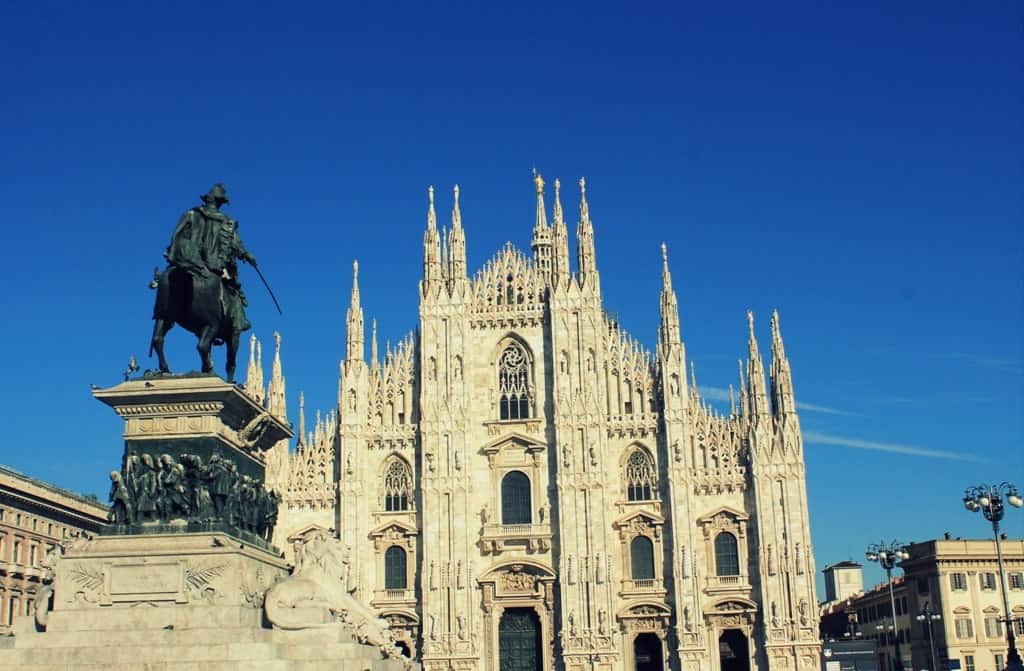Milan is one of the most visited Italian cities and a destination loved by international visitors looking for a cosmopolitan, modern and glamorous atmosphere. It is renowned for its beautiful Gothic Cathedral and for being the Italian business and fashion capital, but you might not know everything about this amazing place!
Let’s discover Milan’s hidden, mysterious and secret sides!
25 Fun Facts About Milan
- In the lush Sempione Park, you’ll see a stream crossed by a small iron bridge named “Bridge of the Mermaids”. It’s rather simple and it often goes unnoticed, but it was the first cast-iron bridge ever made in Italy. However, it’s famous for a couple of other reasons. The first one is that the naked mermaids caused a sensation in the bourgeois society of the XIX century. The second one is superstition: it is said that a kiss on the bridge is a guarantee of eternal love.
- The symbol of Milan is a sort of snake/dragon eating a man. It is surnamed “Biscione” (meaning “big grass snake”) and it’s to be found everywhere: it’s the symbol of Inter football team, it is used by the automaker Alfa Romeo and it is also the trademark of the holding company Fininvest. It was once the coat of arms of the noble Visconti family who ruled Milan for a long time.
- When strolling in the Vittorio Emanuele II Gallery, you might see someone trampling on a bull depicted on the ground: that brings good luck, since the bull is the symbol of Turin, which was the first Italian capital under the Savoia kings! It is also said that if you trample on the private parts of the bull with your right heel while spinning around, you’ll surely come back to Milan once in a lifetime!
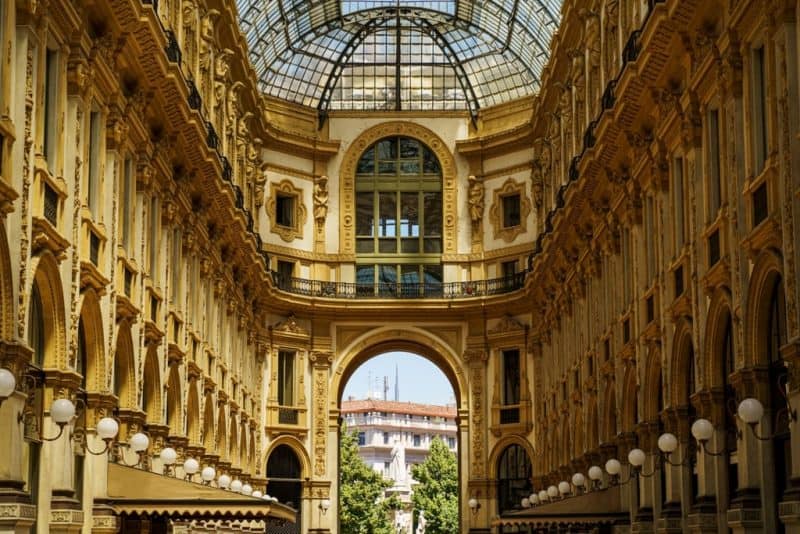
- Milanese people are surnamed Meneghini…why? Meneghino is the main character of the local Carnival and it was a simpleton who worked as a servant for a noble family. He was often the victim of pranks and it was made fun of. Meneghino is not a proper name but a surname coming from the dialectal form of the word “domenica” (Sunday): that’s because local families who were not rich enough to afford some permanent servants used to hire one on Sunday to go out and show off.
- La Madonnina is the golden statue of the Virgin Mary watching over Milan from the highest point of the Cathedral. In Milan, no building can be higher than this statue but modern skyscrapers have been posing a problem! The solution consists in placing a copy of the statue on top of every skyscraper in order to let it still be the highest point of Milan. The other Madonnine are located on top of the Pirelli Building, the Lombardia Palace and the Isozaki Tower.
- Giuseppe Verdi was one of the most famous Italian musicians and composers of all times, but his debut was not very lucky: he was rejected from the local conservatory because they said he had a problem with the hand placement on the piano!
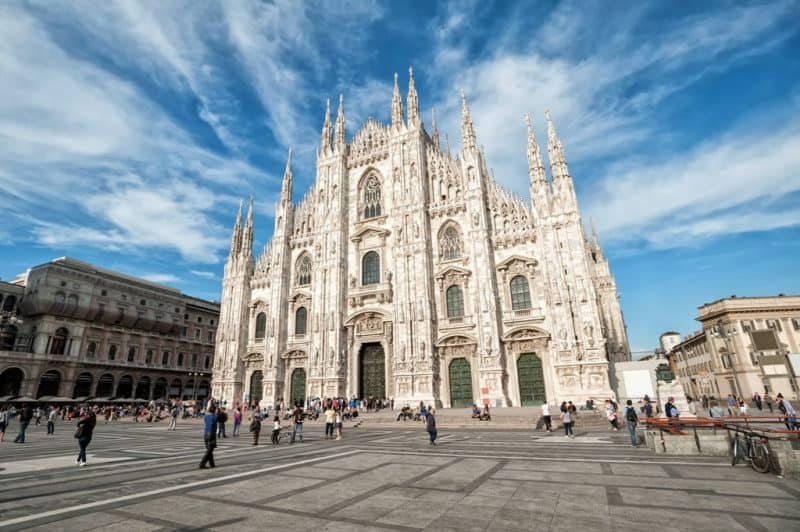
- The Statue of Liberty was probably inspired by a statue placed on the façade of Milan’s Cathedral! This statue was made in 1810, that is 70 years before the Statue of Liberty. It was sculpted by Camillo Pacetti who titled it “The New Law”. You can see a crowned lady holding up a torch with her right hand with a surprising similarity to the famous statue of New York.
- On the floor of the Cathedral, you’ll notice some weird tiles representing the zodiac signs. It’s a sundial dating back to 1786: there’s a small hole in the ceiling from where a ray of light can enter and light up a different tile according to the time of the year.
- February 3rd is St. Blaise’s Day and locals use to eat the last slice of panettone that is said to bring health. Why? Legend says that a lady brought a panettone to a monk to have it blessed before Christmas, but he forgot about it, so he decided to eat it. On Feb 3rd, she went back to the monk to ask about her panettone and he felt really ashamed, but as he was about to tell her the truth, the empty plate turned into a new panettone, even bigger than the previous one!

- In front of the Basilica of St. Ambrose, you’ll see a column with two holes. It is named “Devil’s Column” and it is said that the holes were left by the Devil’s horns. St. Ambrose didn’t give in to the temptations and the Devil tried to stab him with his horns, but he got stuck into the column. To escape, he had to turn into a cloud of Sulphur and disappear. It is said that if you get close enough to the column, you can still smell Sulphur.
- In Poerio Street, there’s a house looking like a Flaming building and named “Dutch House”. It is part of a series of 12 copies scattered all over the world and reproducing a building located in Brooklyn, New York. It was the house where a famous Rabin took refuge during the Nazi persecutions and it was inhabited by Rabins since then. It became a Jewish symbol and it was copied in other cities to be a Jewish cultural center.
- The local carnival is called “Ambrosiano” and it lasts one week longer than usual. That’s because St. Ambrose asked his fellow citizens to wait for his return from Rome to start Lent, so they went on with the Carnival parties in the meantime!
- Did you know that you can see some pink flamingoes in Milan? They live in the garden of Villa Invernizzi. Mister Invernizzi was a local businessman who had great success in the 60s and 70s thanks to his cheese factory. He dreamed of living in unspoiled nature, but his wife didn’t want to leave Milan, so he built a beautiful garden and purchased some exotic animals like South American flamingoes. They adapted surprisingly well to local weather and they still live there all year round!
- The oldest and largest Chinatown in Italy is in Milan and it has about 14.000 citizens.
- Skyscrapers are not exactly beautiful, but there’s one exception: the Vertical Forest. It’s a skyscraper entirely covered with lush vegetation. It won the 2014 International Highrise Award as the most beautiful skyscraper in the world.
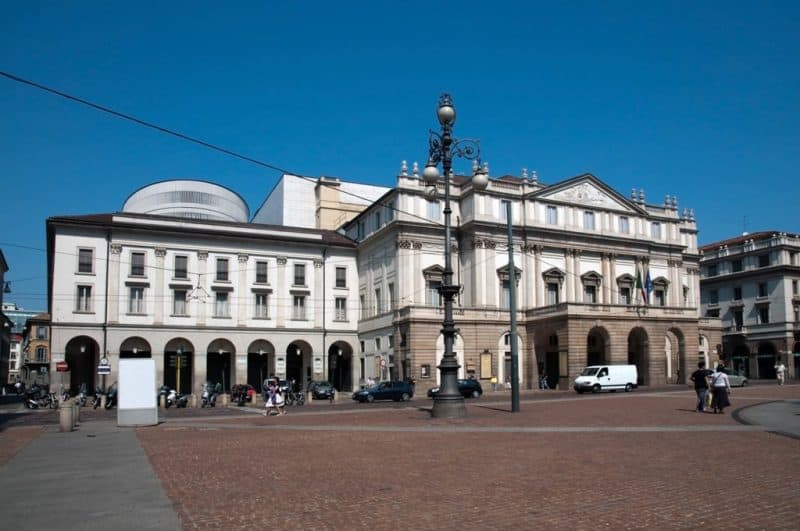
- In the 20s, you might have bumped into one of the so-called “agencies of applause”. Real professionals were paid to attend opera shows at La Scala theater and make some noise to make artists and musicians feel appreciated and popular!
- The canals of Milan are called Navigli (now you can only see Naviglio Grande and Naviglio Pavese) and they were designed by Leonardo da Vinci. They were used to transport the building materials of the Cathedral.
- Leonardo da Vinci left another mark in Milan: he decorated several rooms of the Sforza Castle and his most famous frescoes are to be found on the ceiling of Sala delle Asse.
- The Italian largest stadium is San Siro, which is also the tenth-largest stadium in the world. Its proper name is Giuseppe Meazza Stadium but it is always referred to with the name of its neighborhood. It can accommodate 80.000 people.
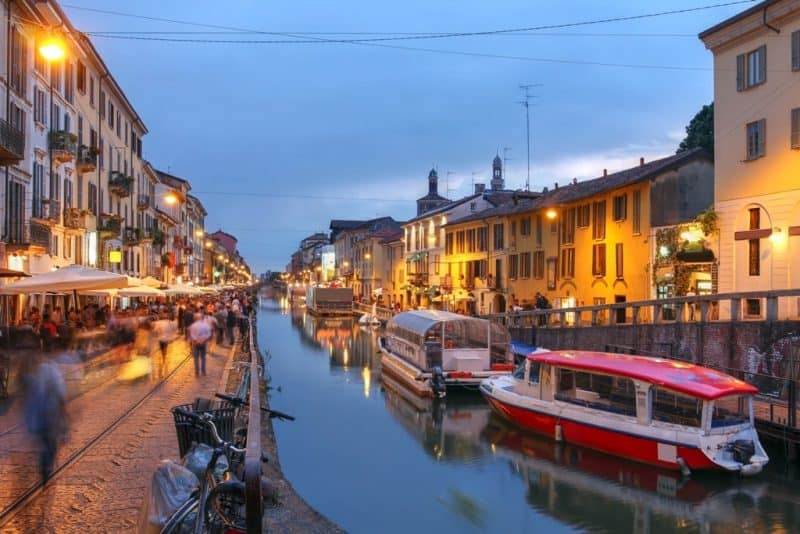
- Have you ever wondered how the Cathedral is kept white and clean in a city full of smog? Thanks to workers specialized in rock-climbing who clean it while hanging on ropes!
- The first fashion show in Milan dates back to 1958. Since then, glamorous fashion shows featuring the main national and international brands are held twice a year gathering celebrities, stylists, models and fashion addicts. Spring/Summer fashion is showcased in September/October, while Fall/Winter fashion in February/March.
- Do you love African rhythms and percussions? Go to Sempione Park on Sunday afternoon where all percussion and bongo players in town gather close to the basketball court and spend long hours improvising jam sessions! If you’re looking for a quiet place to relax, avoid that area of the park on Sunday!
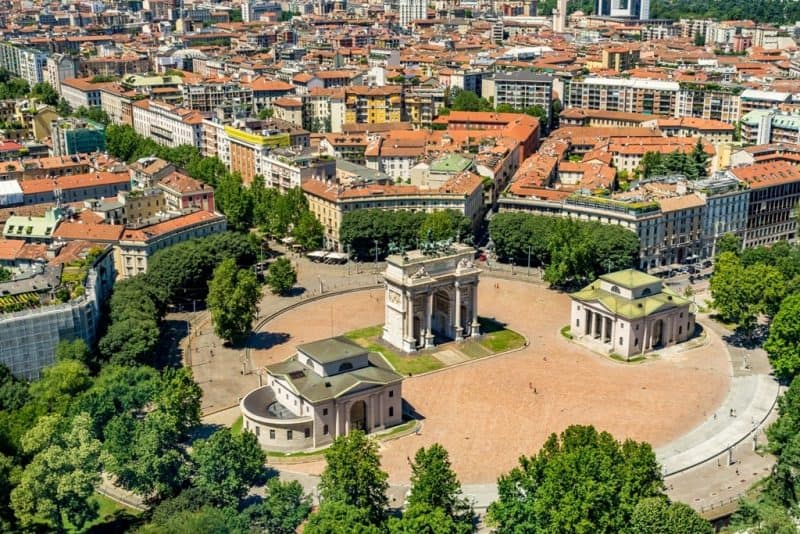
- Avoid Sempione Park also on foggy nights, because you might bump into the Dark Lady. The ghost of a black-dressed and veiled woman wanders around the park preceded by a scent of violets. She is there to lure young men and make them disappear after an amorous encounter.
- Leonardo’s Last Supper is a real masterpiece and it’s also included in the World Heritage List. You can admire it in Milan in the Cenacolo Vinciano but you shall carefully plan your visit since it’s not always available. You might think it’s a fresco, but it was actually made using an innovative technique consisting of tempera over plaster. That wasn’t a great idea, because the painting started to deteriorate soon safter completion requiring constant maintenance.
- It’s not Milan without an aperitivo! What to order?A Campari (bitter and refreshing), a Negroni Sbagliato (with an orange note) or a Spritz (light and sparkling)!

